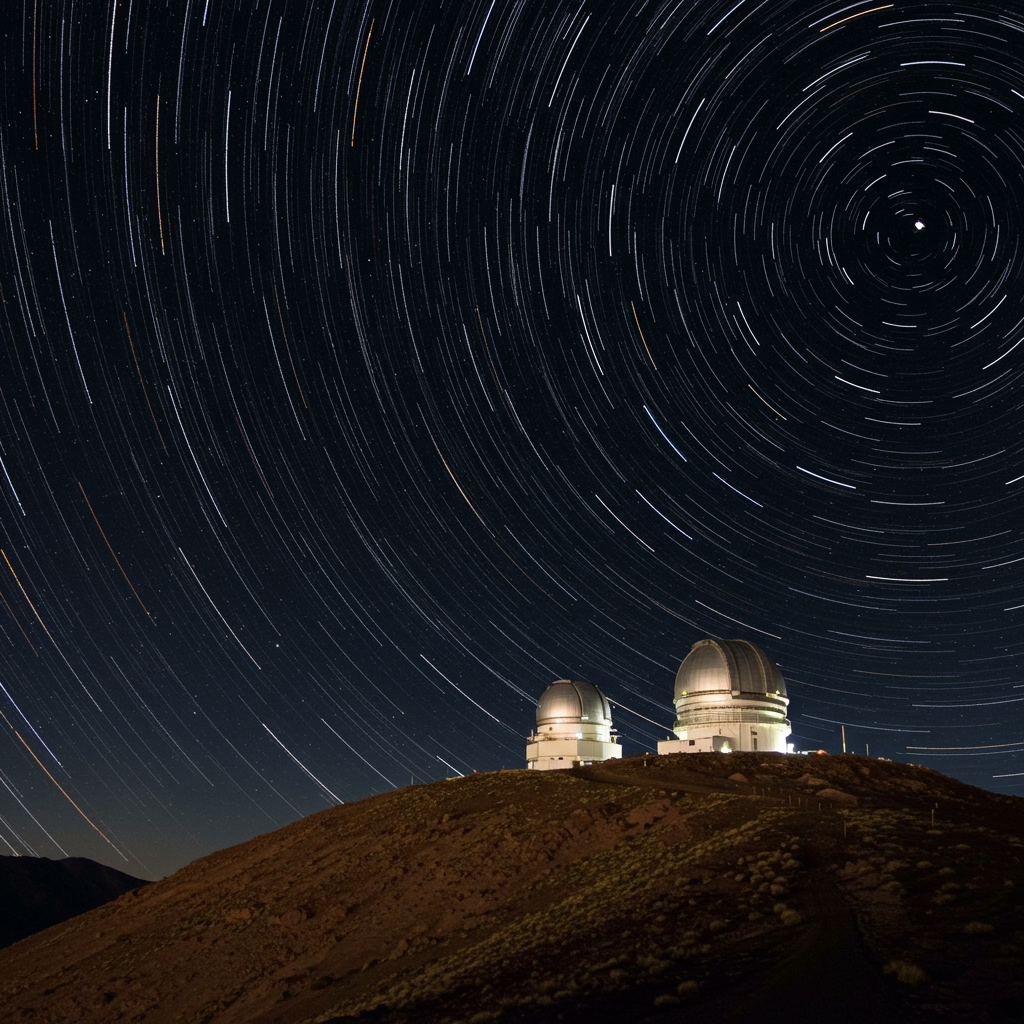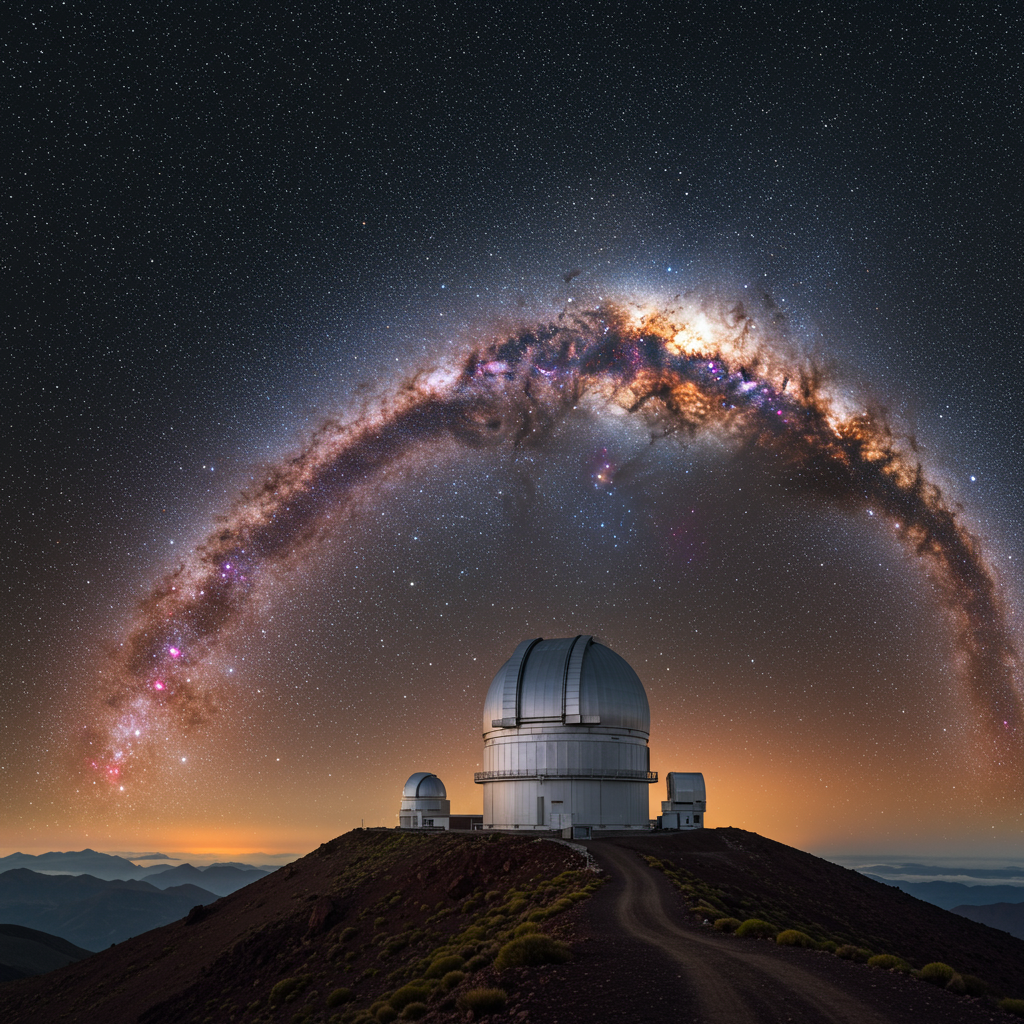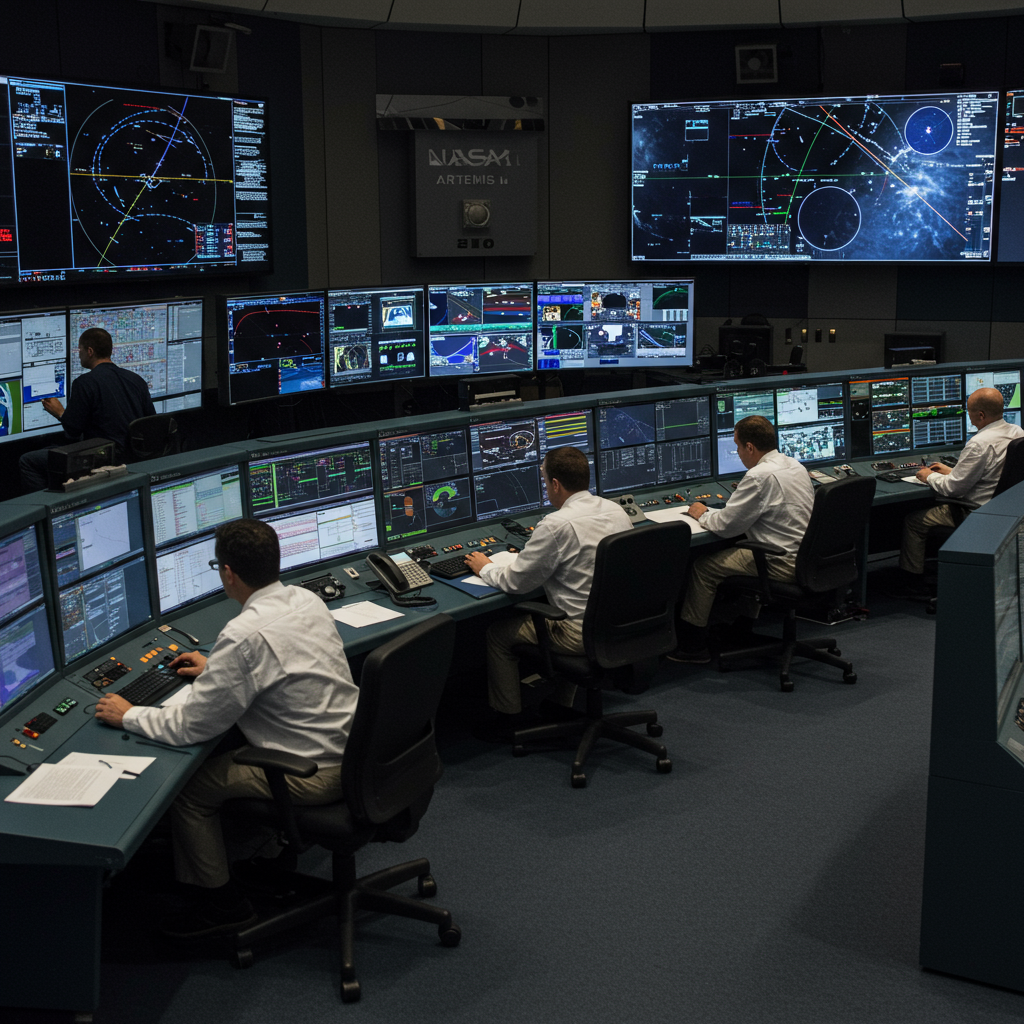A Revolution in Astronomy Faces a Sky Full of Satellites
The NSF-DOE Vera C. Rubin Observatory, poised atop a Chilean mountaintop, is set to revolutionize our understanding of the cosmos. Featuring the largest astronomical camera ever built and an immense 8.4-meter mirror, this $680 million facility is designed for a decade-long mission: the Legacy Survey of Space and Time (LSST). Rubin will repeatedly scan the entire southern sky, creating an unprecedented, ultra-high-definition time-lapse of the universe, peering into mysteries like dark energy and dark matter and spotting fleeting events like supernovae and potentially hazardous asteroids. The anticipation is building, with the first groundbreaking images from this state-of-the-art observatory expected to be released soon.
However, a monumental challenge threatens to dim the observatory’s ambitious vision: the explosion of satellite megaconstellations. When astronomers first conceived of Rubin in the 1990s, the night sky was a different canvas, occasionally traversed by a lone satellite. Today, it’s increasingly crowded with orbiting spacecraft, and the sheer scale of planned constellations is alarming.
The Problem: A Sky Obscured by Bright Streaks
Just as the Vera Rubin Observatory neared completion, the era of satellite megaconstellations, spearheaded by projects like SpaceX’s Starlink, took off. Satellites orbiting relatively close to Earth, like Starlink at around 550 kilometers, are thousands to millions of times brighter than the distant stars and galaxies the observatory aims to study. Their rapid movement across the sky leaves bright, disruptive streaks across the observatory’s sensitive, wide-field images.
The numbers tell a stark story: currently, around 10,000 operational satellites orbit Earth. But with plans from companies like SpaceX (targeting 42,000), Amazon (Kuiper network), and various Chinese entities (Guowang, Qianfan, Geespace) to launch tens of thousands more, this number could swell to over 100,000 in the coming decade – precisely during Rubin’s planned operational lifespan.
Meredith Rawls, a research scientist for the Rubin Observatory LSST, notes that the observatory’s strengths – its wide field of view and exceptional sensitivity – also make it uniquely vulnerable. “All of the characteristics that make Vera Rubin Observatory so amazing for surveying the whole southern sky also mean it’s going to see a whole bunch of these satellites,” she explained.
Astrophysics professor Noelia Noël, also part of the LSST project, estimates the potential impact is significant: up to 40% of the 10 million images captured over the mission’s decade could be degraded by these streaks. This represents a substantial loss of scientific data and a considerable waste of resources, given the high cost of observatory operations. Experts describe the situation as “existentially frustrating,” like “bugs on a windshield,” obscuring critical views.
More Than Just Streaks: Obscured Data and False Positives
The satellite streaks aren’t merely cosmetic blemishes. They outshine fainter astronomical objects, potentially hiding discoveries. Worse, their fleeting bright presence can be mistaken for genuine celestial events, like a supernova explosion or a passing asteroid. A 2021 incident saw scientists initially believe they’d witnessed a star explosion based on a sudden brightening, only to later realize it was sunlight reflecting off space debris passing the telescope’s view. Ensuring the data catalog provided by Rubin is accurate and free from such false positives is a major concern.
Adding to the challenge are extremely bright satellites like AST SpaceMobile’s BlueBird, massive antenna arrays designed for direct-to-smartphone 5G. These are so bright that Rubin must specifically plan observations to avoid them, losing precious observing time.
Racing Against Time: Mitigation Strategies and Future Hopes
Astronomers on the Rubin project are actively developing strategies to mitigate the impact. Rawls and her colleagues are creating advanced image processing algorithms. Using techniques like image stacking, they compare multiple images of the same sky region to identify objects that appear and disappear quickly, helping to distinguish transient satellites from stable or slower-changing cosmic phenomena.
However, these are largely damage-control measures. The ideal solution would be for satellites to be less bright in the first place. The International Astronomical Union (IAU) has recommended satellites aim for a brightness magnitude of 7 or dimmer, effectively making them invisible to the naked eye and minimizing interference for most ground-based astronomy. Unfortunately, current Starlink satellites are significantly brighter, typically ranging from magnitude 3 to 5. Achieving the IAU target is technically challenging for satellite manufacturers.
Some glimmers of hope are emerging from new technologies. A promising development is a super-dark space paint called Vantablack 310, developed by Surrey NanoSystems. Unlike previous ultra-black coatings, this version is designed for easy application and robust durability in the harsh space environment. Tested to reflect only about 2% of visible and near-infrared light – significantly less than competitor paints – Vantablack 310 could potentially help satellites meet the magnitude 7 target without causing issues like overheating, which reportedly affected some prior darkening attempts by satellite operators. This new paint is planned for testing in space on an upcoming satellite mission.
While Vantablack offers a potential technical solution to light pollution, it’s important to note that satellite megaconstellations present other significant challenges, including radio interference, increased space junk, and atmospheric pollution from re-entries.
The Future of the Cosmos View
The coming decade will be crucial for the Vera Rubin Observatory, a period where the ambitious scientific goals of mapping the universe collide with the rapidly changing reality of an increasingly crowded low-Earth orbit. How much scientific data will ultimately be lost to satellite streaks remains to be seen. While mitigation efforts are underway and promising technologies are being explored, the race is on to protect our view of the cosmos for groundbreaking research and the awe of future generations.




